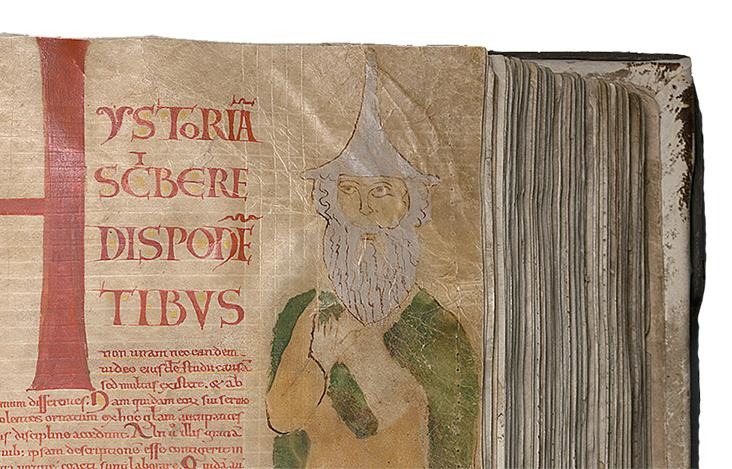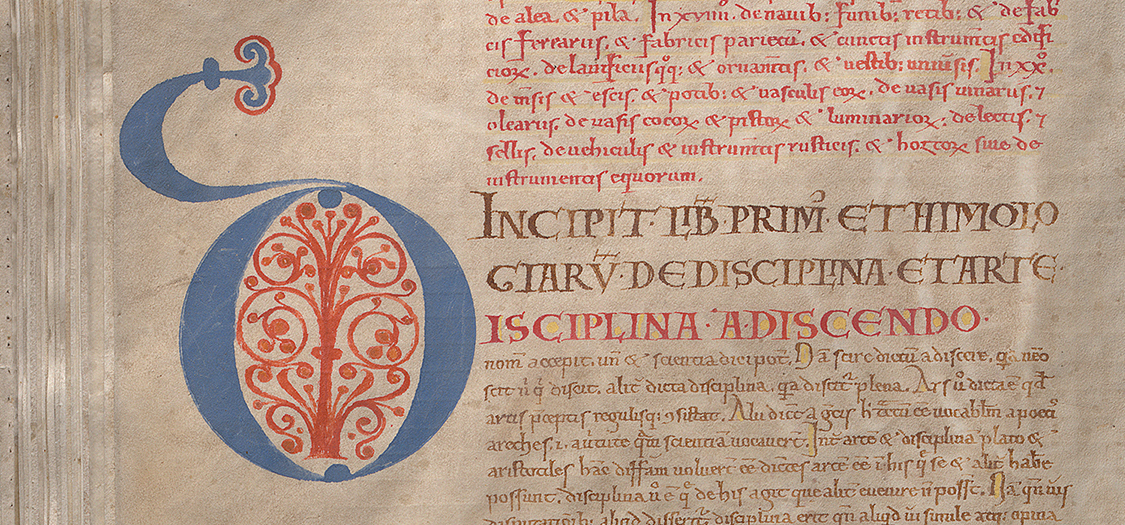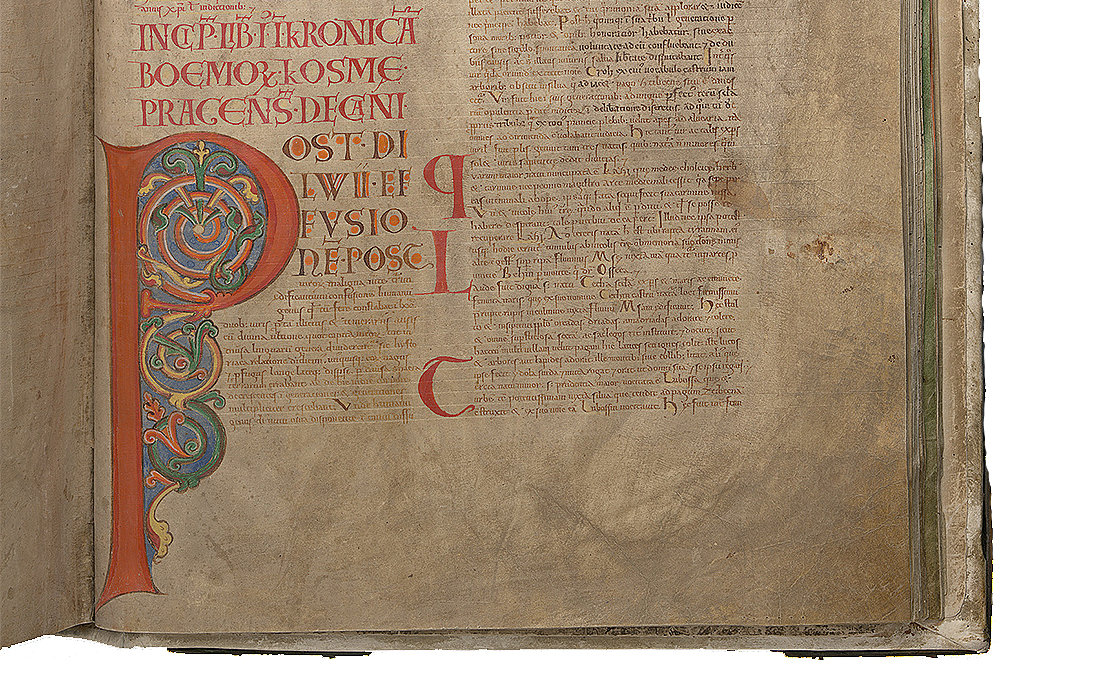History and medicine
The Codex Gigas contains five other long texts in addition to a complete Bible. They were intended to make it easier for the reader to understand the biblical texts.
%20Codex_Gigas_118r_Josefus.jpg)
This picture, which is the only portrait of a person appearing in the entire Codex Gigas, probably depicts Josephus Flavius.
Jewish history
Two of the longer texts in the Codex Gigas were written by Josephus Flavius (approximately 37–100 AD): Antiquities of the Jews and The Jewish War. Josephus was regarded as the great historian of antiquity by the Christian church and was the most widely read ancient writer until the late 17th century.
Antiquities of the Jews describes the Jewish people's history from the creation of the world until 66 AD. The Jewish War relates the story of the Jews' rebellion against the Romans, a conflict that ran from 66 to 70 AD.
An early encyclopaedia
Bishop Isidorus of Seville’s Etymologiae (approximately 560–636 AD) was the most popular encyclopaedia of the Middle Ages. It was the first encyclopaedia produced by a Christian writer without being modelled on ancient Latin literature. The idea was to provide an introduction to the knowledge of antiquity, to instruct the new Christians and to show how the ancient world had led to the advent of the Roman Church.
Etymologiae is a compendium of the knowledge of that time. It contains everything from grammar, rhetoric and geometry to sociology, legal science and philosophy. It even has texts related to entertainment and clothing.

The beginning of a paragraph in Etymologiae.
The art of healing
Medica is a compendium of medical works that was used as a standard manual for the teaching of medicine throughout medieval Europe.
One of these works is Ars Medicinae (the art of medicine). It contains an introduction to medicine as a science, as well as texts on diagnostics. The core of the compendium was the Aphorisms of Hippocrates, which begin with the well-known sentence:
Czech history
The last of the long non-biblical works is the Bohemian chronicle of Cosmas of Prague, which was originally penned around the year 1100. The chronicle is the first work about the history of Bohemia, which makes it an important source for Czech historiography.
Although it normally runs to over two hundred pages, the chronicle fits on only 11 leaves of the giant Codex Gigas.

Initial to Cosmas’ chronicle.
